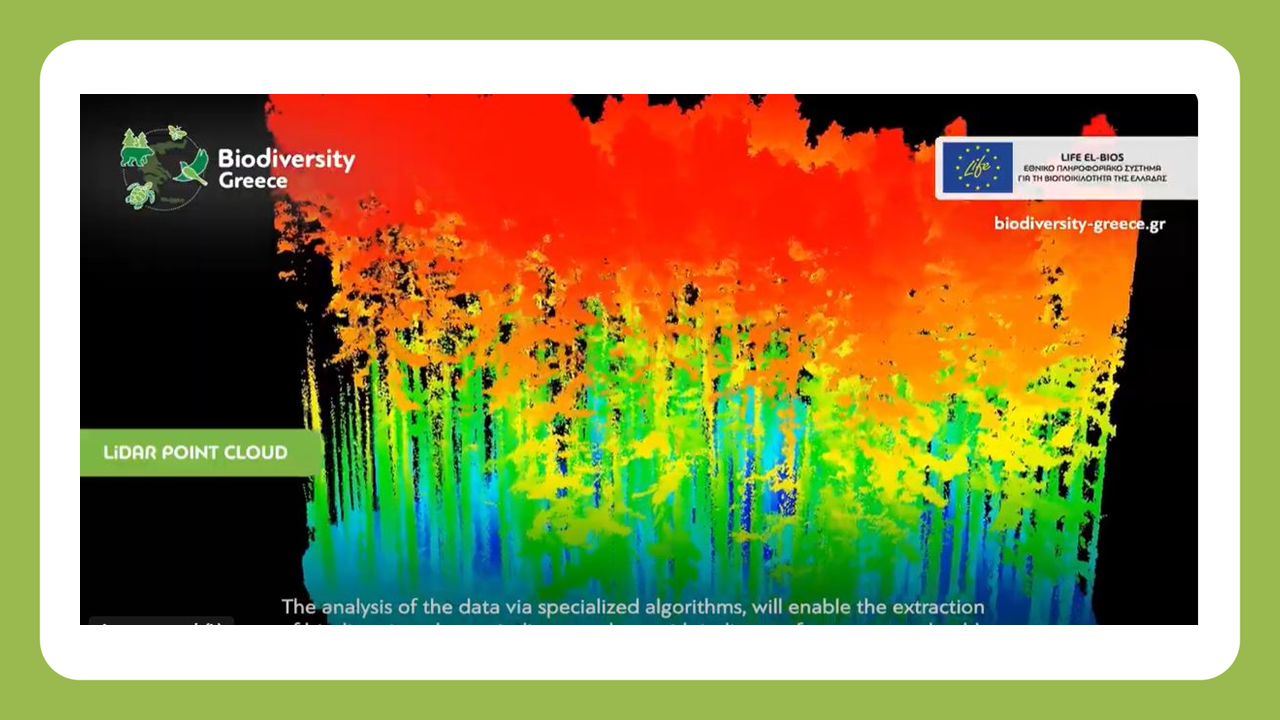VIDEO: LIFE EL-BIOS – INNOVATIVE METHODS & TECHNOLOGIES FOR RECORDING BIODIVERSITY-RELATED DATA IN PROTECTED AREAS

6 Feb 2025
News
VIDEO: LIFE EL-BIOS – INNOVATIVE METHODS & TECHNOLOGIES FOR RECORDING BIODIVERSITY-RELATED DATA IN PROTECTED AREAS
LIFE EL-BIOS Project aims to develop an integrated National Information System for the Biodiversity of Greece.
In addition, one of the actions of the project concerns the pilot use of innovative methods and technologies for recording biodiversity-related data in protected areas.
A team of scientists from the School of Surveying and Rural Engineering of the Aristotle University of Thessaloniki, with the support of Olympos Consulting Company, recorded more than 2 Terabyte of Earth Observation data on biodiversity from Valia Kalda, in the Northern Pindos National Park and from the Kotychi-Strofylia Wetlands National Park.
Using unmanned aerial systems (UAVs) for mapping:
- fixed wing with multi-spectral sensor,
- quadcopter with LiDAR (Light Detection & Ranging) sensor,
- quadcopter with RGB sensor
images and data were recorded through 3D laser scanning.
Different types of terrestrial laser scanners were employed in properly selected sampling plots:
- Terrestrial Laser Scanners,
- GNSS Receivers,
- SLAM (Simultaneous localization and mapping) Systems.
The analysis of the data via specialized algorithms, will enable the extraction of biodiversity relevant indicators, along with indicators for ecosystem health and conservation status over the pilot areas:
- Species richness,
- Density,
- Micro-habitats,
- Diversity,
- Biomass,
- Height,
- Canopy density,
- Deadwood,
- Diameter at breast height,
- LiDAR point cloud.
A team of scientists from the Department of Electrical and Computer Engineering of the University of Thessaly, designed, developed and installed an autonomous network of wireless sensors for the remote collection of biodiversity data in the Northern Pindos National Park.
10 sensing nodes that collect biodiversity data and record sounds, were installed within the National Forest of Pindos (Valia Calda):
- Humidity,
- Atmospheric pressure,
- Temperature,
- Sounds of animals,
- Sounds of human presence / interference.
An autonomous 9-sensor node was installed at Tymfi Dragon Lake (alpine lake), for the recording of water quality parameters:
- Air temperature,
- pH,
- Dissolved oxygen,
- Water temperature,
- Turbidity,
- Electrical conductivity,
- Chlorophyll,
- Ammonium ION NH4+
- Nitrate ION N03-
The biodiversity related data, collected through those autonomous wireless sensors networks, are subsequently processed and used to feed artificial intelligence algorithms, that provide the necessary information for timely and informed decision-making.
Finally, in the framework of LIFE EL-BIOS project, a set of biodiversity indicators was developed and incorporated into an Earth Observation Data Cube. These indicators aim to capture different aspects of the natural ecosystems condition, throughout the Greek territory.
